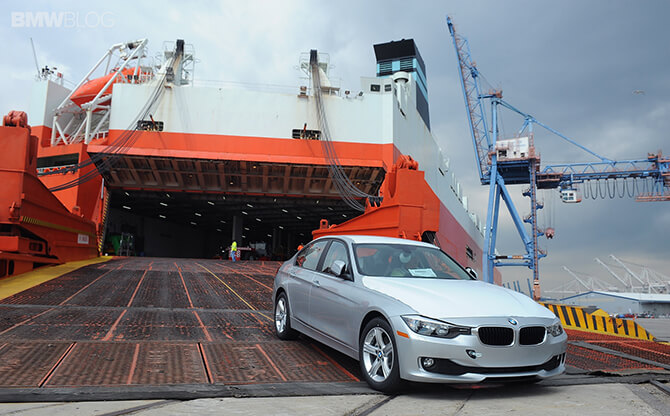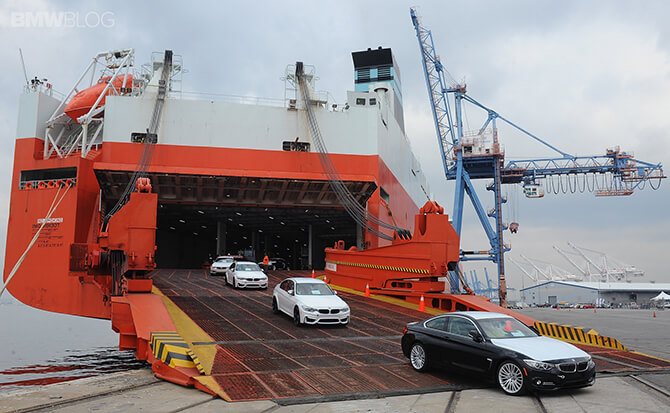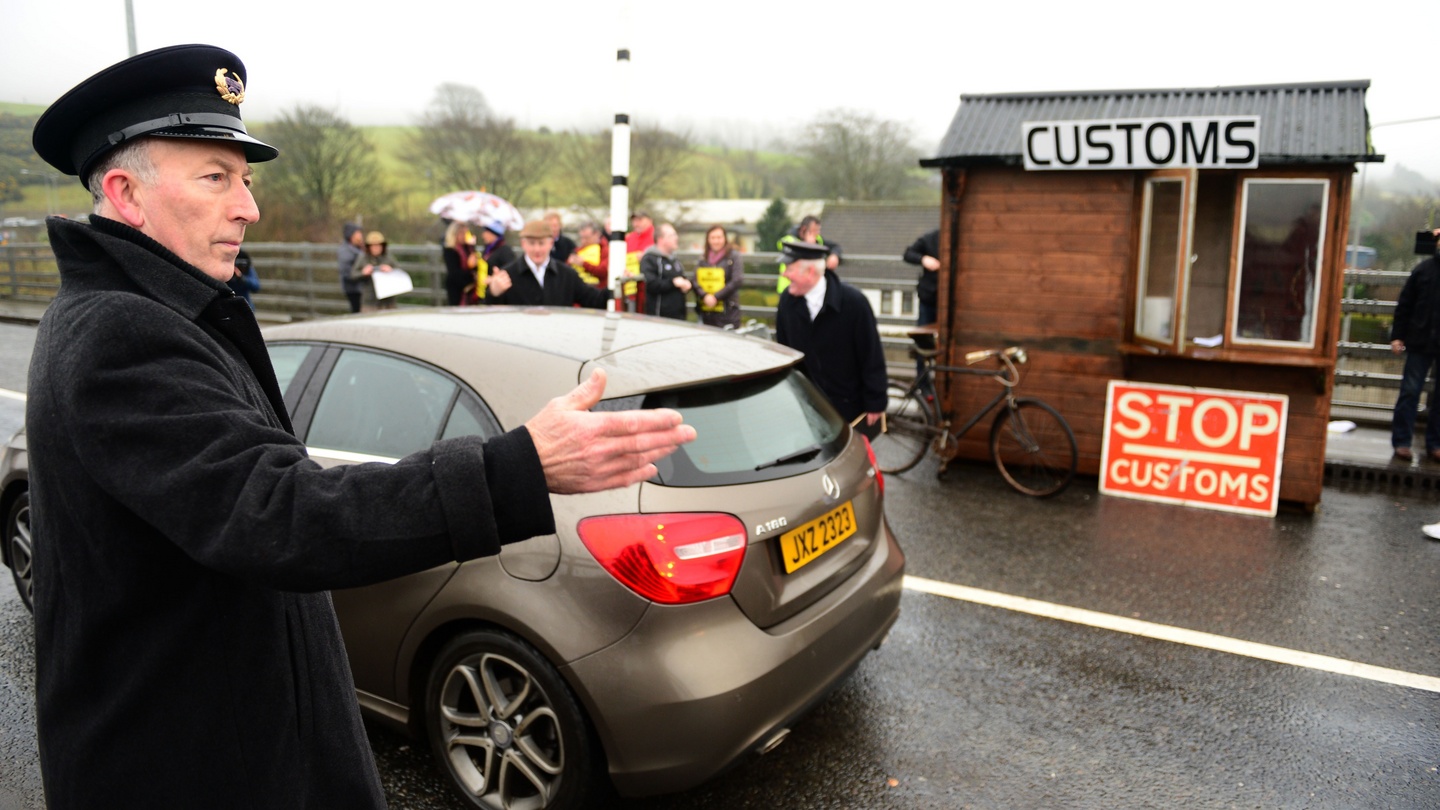UK Imports - VRT, Tax and Import Duty

Importing a vehicle from the UK and Northern Ireland
Are you importing a vehicle from the UK? If so, you may have questions regarding Brexit and vehicle imports.
The changes in vehicle registration tax (“VRT”) and motor tax and fuel are part of the Government’s Climate Action commitments and each aims to incentivise motorists to move away from higher polluting vehicles.
VRT, NOx charges and the implications of Customs and Excise under the new arrangement?
The following is a general overview of some of the changes that may be implemented from January 1 2021.
Please note: This is not an official source but just for general informational purposes. You must satisfy yourself that you have done all your own research and accessed official Revenue.ie and VRT sources for further information. Thank you.
Four main areas that will affect motorists from January 1st 2021
- Carbon Dioxide (CO2) Charges
- Nitrogen Oxide (NOx) Charges
- Customs and Excise
- Motor Tax
Key Points
- VIN will need to be presented on any Customs Declarations
- Revenue may look for a Customs Declaration displaying the VIN
- Full original V5C UK Registration Document is mandatory
- Customs Declaration may need to be made before presentation at the NCTS
- Importing cars from Great Britain will require a Customs Declaration and potential payment of duties and VAT
- Customs Duty and VAT is only payable at the Point of Importation
- VRT will not payable at the Point of Import
- VRT is only payable at the Point of Sale at a registered authorised dealer or at the point of registration at an NCT centre
- Option for postponed accounting and deferred payment of Customs Duty and VAT for a period of 30 days
- V5C UK Registration will remain the key document for all used vehicles from the UK coming into the State
- Vehicles coming from NI will be treated as Intra-Community Acquisitions and is seen an EU member State under Brexit protocols. Documents needed: V5C with a NI address of the Registered Keeper and documentation from the dealer (invoice) that they had the vehicle in stock prior to Brexit
- VRT is waived with a valid transfer of residence from NI to ROI. To have a valid claim you must prove possession of use for a 6 months period prior to transferring your residence and you must also prove that the vehicle is owned by you and is your personal property
Summary of VRT rate changes:
- Existing 11 band VRT table replaced with a 20 band table with a revised rates structure
- VRT rates will range from 7% to 37% (current range from 14% to 36%)
- A formula will be used to calculate VRT to bring the current NEDC emissions test in line with the new WLTP test
- The existing VRT reliefs for plug-in hybrid electric vehicles and hybrid vehicles will expire on 31 December 2020
- PHEV’s will qualify for lower VRT rates under the new WLTP system
- Existing relief for Battery Electric Vehicles will also be tapered
- The Nitrogen Oxide (NOx) surcharge bands introduced in Budget 2020 will also be adjusted so that higher NOx emitting vehicles are subject to higher rates of VRT
Changes to VRT Rates from 1 January 2021

Vehicle Registration Tax rates will change from 1 January 2021 and is subject to the Finance Bill 2020. This newly introduced Bill has been entitled in part as an “Act to provide for the imposition, repeal, remission, alteration and regulation of taxation, of stamp duties and of duties relating to excise and otherwise to make further provision in connection with finance including the regulation of customs…”
Carbon Dioxide (CO2) Charges
The CO2 tax is calculated based on WLTP CO2 data for new Category A vehicles (passenger cars and SUVs) and vehicles which have been previously registered using WLTP CO2 data.
Many vehicles may have previously been registered based on the old NEDC figures and so to compensate for the newer WLTP data Revenue will apply the following formula which is used to calculate a CO2 figure and to assign a CO2 tax band:
How are we to understand this new formula?
Up until recently, all vehicles were tested for CO2 with the now discredited New European Driving Cycle (NEDC) Test.
Since the Voldwagen emissions scandal back in 2015, there is now a transition away from the NEDC test to the new Worldwide Harmonised Light Vehicle Test Procedure (WLTP)
All vehicles manufactured before September 2018 were subject to the NEDC test and all vehicles produced since then have been tested under the WLTP.
To bring all these used vehicles in line with new cars, the above formula is now applied to all the pre-September 2018 vehicles. It is necessary to implement this calculation to bring older vehicles into line with the new test.
Based on EU methodology, the line equations act as multipliers which raise NEDC CO2 values to be equivalent with WLTP. The new equations show that diesel engines have a lower overall CO2 level than petrol engines.
The Table below shows the VRT rates which will apply from 1 January 2021 to vehicles based on the WLTP CO2 or the calculated CO2.
Nitrogen Oxide (NOx) Charges
Nox Charge and proposed new Category A rates in 2021
Basis of Charge
Nitrogen Oxide (NOx) emissions will be taxable beginning on 1 January 2020 for all Category A vehicles including hybrids but excluding electric cars.
The NOx charge will be a component of vehicle registration tax as outlined below. NOx is measured in milligrams per kilometre (mg/km) as recorded on the Certificate of Conformity and in the case of UK imports, the V5C document.
Some foreign registration certificates may show the NOx figure as grams per kilometre. This does not have any effect on the tax due as Revenue will convert this to milligrams during the registration process. In the case of heavy duty vehicles this will be milligrams per kilowatt hour.
There are also changes to the NOx calculation as below.
Calculation of Nox Charge
Prove the NOx or Maximum Charges Apply
If you cannot give satisfactory evidence of NOx emissions to the VRT office, the following maximum charges will apply:
- Diesel vehicles:€4,850
- or
- Petrol, Hybrid and Electric: €600
Examples of the VRT calculations
| Sample 1: |
|
2016 4-door saloon, 1.8l Previous registration document: CO2 Component of VRT due - 124 g/km = 19% of OMSP = €5,295
Total VRT due (combined CO2 + NOx) = €5,335 |
|
Sample 2: |
|
2006 5-door SUV, 3l
Previous registration document: - CO2 (g/km) - 213 - NOx (g/km) - 0.090 - OMSP - €2,542
CO2 Component of VRT due - 213 g/km = 35% of OMSP = €889
NOX Component of VRT due - 90 mg (0.090 g x 1,000) - first 60 g x €5 = €300 - next 20 g x €15 = €300 - next 10 g x €25 = €250 - Total = €850
Total VRT due (combined CO2 + NOx) = €1,739 |
| Sample 3: |
|
2015 5-door hatchback diesel, 1.9l Previous registration document:
|
|
Sample 4: |
|
2010 2-door Sports Coupe, 5l petrol
Previous registration document: - CO2 (g/km) - NOx (g/km) - OMSP - €30,847
CO2 Component of VRT due - No satisfactory evidence of CO2 presented: 36% of OMSP = €11,105
NOX Component of VRT due - No satisfactory evidence of NOx presented. Charge default: €600
Total VRT due (combined CO2 + NOx) = €11,705 |
Revenue VRT Video Presentation
To assist businesses in preparing for Brexit the following presentation video has been prepared by Revenue which describes the process of importing and exporting vehicles from and to the UK, including NI. It also covers importing or exporting vehicles to other EU Member States through the UK landbridge.
VRT Registration Scenarios
Vehicles currently in the State
These will be unregistered vehicles that private individuals own or are held in stock by TAN holders. When you register these vehicles, the important thing is to have an invoice proving that the car was in the State before Brexit occurred. If you are a TAN holder and you have stock from 2020, you can continue to hold this stock and you don’t need to worry about registering the vehicle before Brexit. You must be able to prove that the vehicle was in the State prior to Brexit.
Vehicles declared to Customs at a Port of Entry
These are vehicles that come in from Great Britain into one of our ports. In this scenario, a Customs Declaration has to be filed, which means the VIN is stored on the Revenues system. When registering the vehicle at the VRT Office at an NCT Centre, the VIN will be checked against the Revenue’s systems. If the VIN is on the Customs Declaration and it is visible to the VRT office, you will be able to register your vehicle as normal.
Vehicles declared after entry to the State
These are vehicles that weren’t reported at the port of entry but were declared at a later date, it is the same scenario as the previous, the VIN will be on Revenue’s systems and when you present at a centre for registration, the vehicle can be registered as normal against the Customs Declaration.
Vehicles entering the State from Northern Ireland
Generally, vehicles entering the State from Northern Ireland after Brexit these will be treated as Intra-Community Acquisitions and they can be registered as normal at the VRT office located at the NCT centres. In some circumstances though, a Customs Declaration may be required if the vehicle was imported into Northern Ireland after Brexit. In this scenario, you will have to present that copy of the Customs Declaration to the VRT office
Vehicles that are in dealers stock in Northern Ireland
These are vehicles that you may have purchased in Northern Ireland which has been in the dealers stock. You will need to have proof that they held this stock in trade prior to Brexit occurring. This can be in the form of an invoice or a declaration from the manufacturer declaring that fact. These will all be presented to the centre when registering a vehicle in this scenario.
New vehicles manufactured in the UK
These are vehicles manufactured in the United Kingdom. The significance of this is related to the Type Approvals of the vehicles. The E11 Code which is for the UK is no longer valid as the UK is leaving the EU. In this circumstance a Certificate of Conformity (CoC) which is required to be presented for all new vehicles. Those E11 CoC’s will no longer be accepted by Revenue.
This is a matter that has to be addressed with the National Standards Authority of Ireland if you have any queries, as the are the competent authority in the State for Type Approvals. Most of these vehicles have already changed their type approvals, however if you are looking to purchase a vehicle after Brexit that has an E11 Type Approval Code, this is something that you have to address with the NSAI. In this scenario, these will not be registered by Revenue after January 1 2020.
There may be other scenarios that could develop but you must satisfy yourself that you are compliant with any new changes resulting from Brexit.
If you have a specific query in relation to Brexit and customs matters, you can submit these by email to [email protected] with the relevant details.
Export Repayment Scheme
Just as we import a lot of vehicles from the UK we also export a lot of vehicles back over to the UK to to the proximity of the State.
- If you are permanently exporting a car out of Ireland, you may be entitled to a repayment of the residual tax. This will be calculated through the Export Repayment Scheme.
- For cars leaving Ireland and going to Great Britain, you will need to ensure that the VIN detail is included in the export declaration
- For cars leaving the State to Northern Ireland, you must provide proof of the new NI registration. This is because Northern Ireland will be treated as an EU Member State for the purposes of the Export Repayment Scheme under the Brexit protocols. Northern Ireland is not classed as a ‘Third Country’ in this matter. You just need to provide proof that the vehicle has been re-registered in NI.
Additional VRT
Additional VRT is charged when a vehicle is not registered within 30 days. The additional VRT is added to the total VRT due. The additional charge is calculated by multiplying the total VRT due by 0.1%. An additional 0.1% is added on for every day the vehicle is not registered, from the date of its first entry.
Imports declared to Customs before VRT?

From January 1st 2021, imports (apart from NI) from mainland UK should be declared to customs before you have the vehicle registered with the VRT registration office located at the NCT centres.
You will no longer simply just hop over the border to Northern Ireland and drive it back or go to the UK mainland and bring a car in. You must clear Customs and Excise first.
The new customs and trade issues are likely to be very challenging for car dealers and individuals importing a vehicle from Northern Ireland or the rest of the UK.
For most, this will be your first time dealing with a Customs and Excise Trade regime. This will be on top of the VRT importation procedure and charges.
- VIN will need to be present on Customs Declaration
- Full Original V5C UK Vehicle Registration Document
- Customs Declaration must be made before presentation at the National Car Testing Service (NCTS)
- Importing cars from Great Britain will require a customs declaration and potential payment of duties and VAT
Customs and Excise

Rates of duty vary according to types of goods and their classification and under the new Brexit laws, cars coming from the UK (outside the EU) are also subject to customs.
Understanding how these customs charges and taxes affect your operations is paramount. Unlike VAT, Customs or Excise Duty is not recoverable. This will mean direct, and often substantial cost to your business.
Motor Tax Rates 2021
From 1 January 2021 there will be three Motor Tax tables in operation:
- The pre-July 2008 table based on engine size
- Cars registered up to 31/12/2020 and those from 2021 which are NEDC tested only
- Cars registered from 1/1/2021 which ar WLTP tested
There are extra CO2 bands in table 3 to
(a) make the aligning of WLTP and NEDC equivalents more workable, and
(b) strengthen the environmental rationale of the tax by tying it closely to the polluter-pays principle
The rates for the bands in the WLTP table are aligned as closely as possible to their equivalent in the NEDC table of which the majority of cars fall.
For example, a WLTP-tested car with CO2 110 g/km is roughly equivalent to 90 g/km under the NEDC test. Therefore an NEDC-tested car having 90g/km, and a WLTP tested car producing 110g/km, would pay the same €180.
Where there are divergences, for the most part they are likely to be of the order of €10 per annum (the rates gap between a single CO2 band where most of the volume lies).
New Motor Tax Table
Cars which are first registered in the Republic up to the end of 2020, or even from January 2021 which only have the old NEDC figure, will be subject to the current NEDC motor tax table, with some minor adjustments as follows:
Pre-2008 registered cars, which do not have CO2 emissions information, will continue to be taxed according to their engine size based on existing rates.
Motor Tax Rates Tables by Basis of Assessment
The Basis of Assessment (BOA) is the vehicle detail which facilitates the calculation of the appropriate motor tax fee, e.g. engine capacity or CO2 emissions for private cars, weight for goods vehicles. The three motor tax tables are as follows:
Private Car CO2 (NEDC)
The basis of assessment (BOA) in the following table is based on CO2 Emissions calculated with an NEDC Value (majority of vehicles)
The rates of taxation are as follows:
Private Car CO2 (WLTP)
The Basis of Assessment (BOA) in the following table is based on CO2 Emissions is calculated with an WLTP Value
Vehicles taxed on CO2 Emissions Bands C to G inclusive in the Private Car CO2 link below), and whose tax disc commences from 1 January 2021 are subject to a motor tax rate increase.
If your vehicle is taxed on one of those CO2 bands, you are advised to check your motor tax renewal notice issued in December 2020 to ascertain the correct rate. For all other vehicles, the rates displayed are applicable
The rates of taxation are as follows:
Private Car CO2 (Standard)
The Basis of Assessment (BOA) in the following table is based on CO2 Emissions and calculated by ENGINE CC.
The rates of taxation are as follows:
Author

Justin Kavanagh
Justin Kavanagh is a recognised leader
in automotive intelligence and vehicle
data supply to the entire motor industry.
He has almost 20 years experience in
building systems from the ground up.
As the Managing Director of Vehicle
Management System, he understands the
need and importance of trustworthy and
reliable vehicle history and advice to
both the trade and the public.
Follow me on LinkedIn
_p4n7DKlG.jpg)